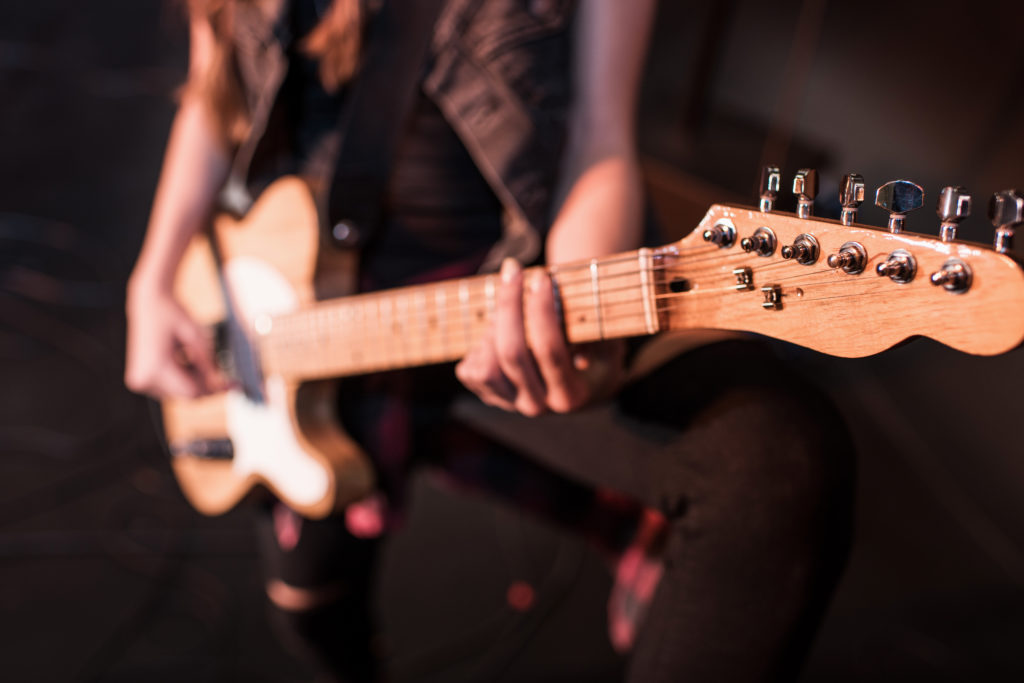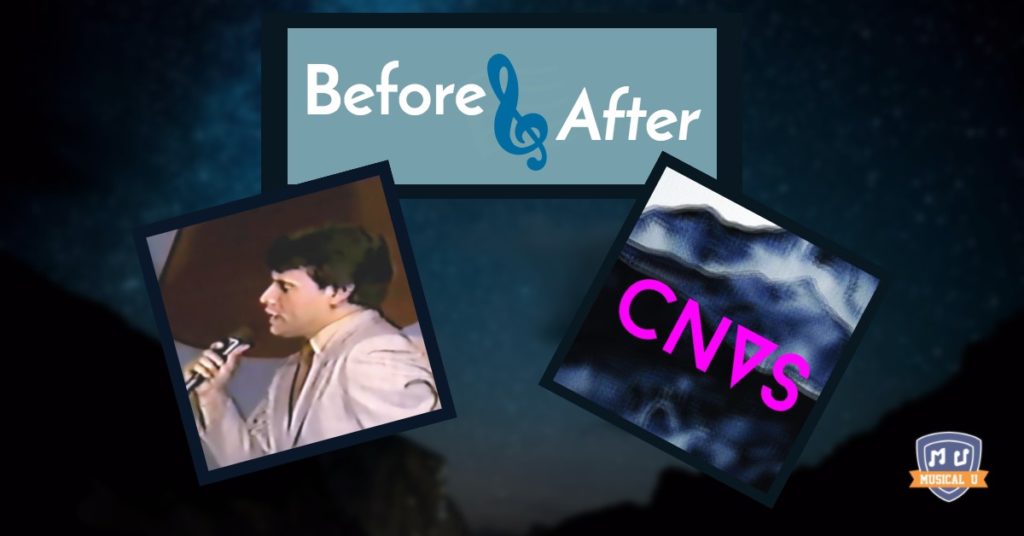Let’s say you decided to cover a song but had a hard time finding any official sheet music or chord charts for it – as tends to happen with a lot of popular music.
Maybe you try typing “[name of song] chords” into Google, but the results you get don’t sound true to the song. Or maybe the chord structure is just too complex and you would prefer to keep your version a bit simpler.
The latter situation happened to Mexican indie-rock quintet Canvas when they approached the song “Yo No Nací Para Amar” by one of Mexico’s most iconic voices: Juan Gabriel.
The chord structure didn’t make that much sense and never quite repeated, so they chose to base everything off the main vocal melody and write their own chord progression for it. This allowed them to create their own specific arrangements, and thus push the song into exciting and new territory.
Let’s have a listen, shall we?
Before: Juan Gabriel’s Original Version
An icon of Latin music and one of Mexico’s best-selling artists of all time, Juan Gabriel was known for his flamboyant stage presence, soulful voice, and cross-genre experimentation. He experienced decades of success with his unique fusion of Mariachi, rock, disco, and pop music, releasing over 40 singles and garnering fame as one of Mexico’s best and most prolific singer-songwriters. His 1980 hit “Yo No Nací Para Amar” (translation: I Was Not Born To Love) is an amazing example of his vocal abilities and melodic genius:
Melody First, Chords Later
Whenever covering a song, or even while just listening for pleasure, it helps to understand the artist’s approach to making music. In the case of Juan Gabriel, it’s important to note that he was first and foremost a vocalist.
His approach to composing was coming up with a melody along with some lyrics, and then basing all other elements of a song off of that. He chose the chords that worked best for his melody, wrote them down, and then made arrangements for a band or orchestra to follow.
Of course, an important thing to note is that when composing in this style, several chords can work for the same part of a melody. Since several notes are being played simultaneously, this opens up a lot of harmonic possibilities. This also explains why you can come up with several different chord progressions that fit a single melody.
A Vocally-Oriented Arrangement
The arrangements of the studio version of this song are for a band to play. The piano is providing the bedrock in terms of harmony, while the bass guitar is defining the root note of each chord. If you pay attention to each chord change, you’ll notice that the progression is quite complex, and unlike most progressions in pop music, it’s not cyclic.
As usual, the drums and bass are driving the subtle rhythm of the song while an organ-like instrument does a playful counter melody. As you’ll notice while listening, Juan Gabriel’s vocals and lyrics are the pure essence and soul of the song.
When performing live, Juan Gabriel would usually adapt this song for an orchestra to play. You can have a listen here and see what elements are preserved, and which are totally transformed:
Song Structure
Juan Gabriel has kept it nice and simple. It follows a typical A/B song formula, where A is the verse and B is the chorus. The outro is even a rehash of the chorus’s melody – a sort of re-statement, really. As is common in pop music, the chorus is the most memorable part of the song.
After – A Modern Version By Canvas
The guys from Canvas recorded this cover just for fun in July 2016. Only after learning of the original composer’s death a month later did they upload it to their Facebook page as a way to pay their respects.
A Shift in Style
As a five-piece indie rock band, Canvas has a very different style of composing than Juan Gabriel. All five members contribute to the processes of songwriting and arranging. Most of the time, they even take on production duties themselves.
Like many bands, a big part of their songwriting process comes from jamming together. These sessions tend to ignite spontaneous bursts of creativity. The ideas that stick tend to make it to the final arrangements is usually a group decision.
From this difference in the creative process, you can already picture their cover of “Yo No Nací Para Amar” being quite different. When approaching this song, however, they decided to act almost like Juan Gabriel’s arrangers. They took the original melody, chose Santiago Prado (bass & lead vocals) to sing it exactly like it was written, and decided that they would write a chord structure of their own that followed Santiago’s vocals:
Other than that, they allowed the music to flow freely, as demonstrated by their unique instrumental elements and sections that share almost no similarities with the original.
It is worth noting that the skeleton of the song – drums, bass, and synths in this case – were all recorded live. This was most likely done at a time when the band was able to perform the song together. This would allow them to be even more flexible with the additional guitars and synths, which were added separately.
Painting Music On A New Canvas
From the first few seconds of the song, it’s already apparent that there is much more going on than in the original. The tempo is faster and more aggressive, and the drums are much more driven and marked than in the original.
In the intro, there’s an atmospheric synth doing a continuous melody, and lead guitarist Isaac Reyes is doing a little staccato motif at the end of each measure.
 As the intro transitions into the verse, everything stops. The vocals come in first, with the whole band’s instrumentals following a beat after. The vocal style is a bit more restrained than the original, with less flair but with that raspiness that works beautifully in rock music. During the verse, the work of the lead guitar keeps things exciting and builds up energy; the first half of the verse contains sparse guitar licks, while the second round showcases more of that math-rocky staccato.
As the intro transitions into the verse, everything stops. The vocals come in first, with the whole band’s instrumentals following a beat after. The vocal style is a bit more restrained than the original, with less flair but with that raspiness that works beautifully in rock music. During the verse, the work of the lead guitar keeps things exciting and builds up energy; the first half of the verse contains sparse guitar licks, while the second round showcases more of that math-rocky staccato.
Canvas does a great job at introducing the chorus in the song. Similar to the verse, the instruments drop out just before the chorus kicks in, allowing the vocals to take center stage. Here, the chorus is sung in unison by two band members for more impact. The instrumentals return a few beats later, this time with a more continuous beat and more dynamic instrumentation.
What I love most about this cover are the fully instrumental bits. Following the first chorus, Canvas come up with a whole new section and the guitar does a small solo that rivals the pain and sorrow of Juan Gabriel’s original vocals. The outro, with its loud and steady clashes, shows how each band member was capable of evoking the song’s torment using their own instrument.
Shifting Support
Canvas’ cover is a perfect example of how you can create your own chords and arrangements from scratch using a song’s original vocal melody. They took a classic from one of Mexico’s most acclaimed singer-songwriters, and transformed it into a collective endeavor without losing any power or emotional depth in the process.
What touches will you add to your cover to make it your own? The possibilities are as vast as Juan Gabriel’s discography! Take a page from Canvas’ book, and try an instrumental drop-out, a chorus with dual vocals, or changing the pace of a song’s rhythm to give it more punch.







